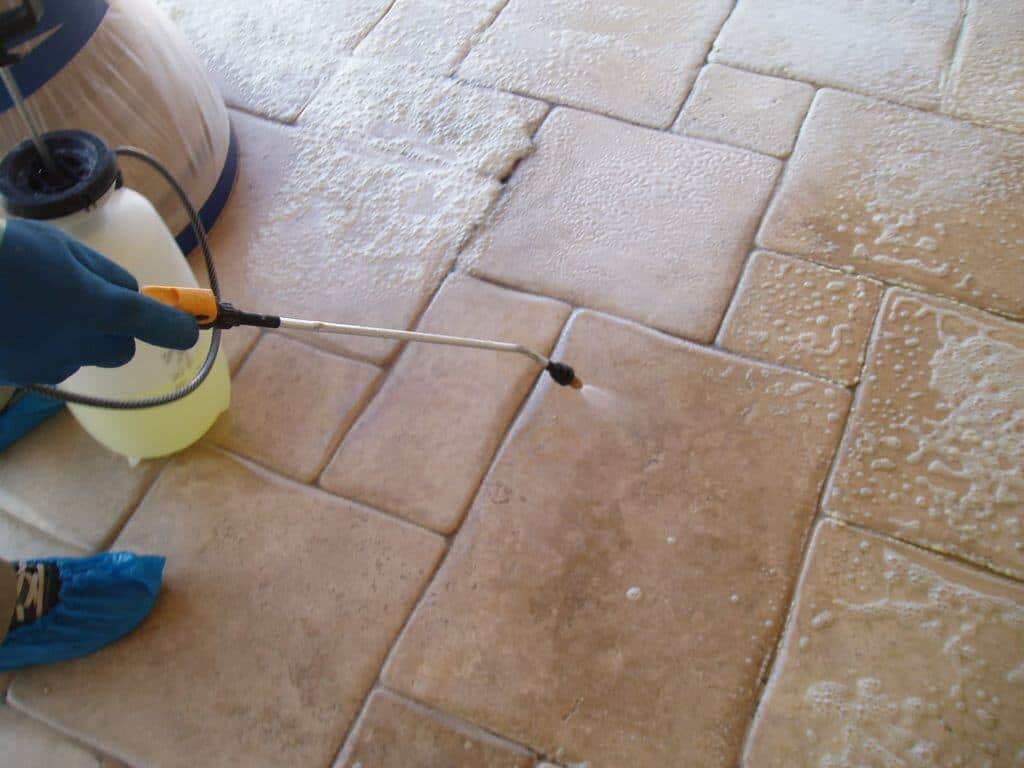


Recently, we worked at a very nice home in Discovery Bay on the California Delta. The owner had a problem. He has a beautiful backyard with pillow-cut limestone (stones that are rounded on the edges) surrounding his infinity pool and hot tub, over-looking his boats and the shimmering waters of the Golden State.
So far, it doesn’t sound like he has much of a problem, but there was trouble in Paradise. This client was having problems because the stone was polished just enough to make it slippery when the stone was wet, which–with a hot tub, pool and water-sports–was making for what he called a “*&^*%$ ice rink.” His grand kids and guests were having a hard time keeping their backsides below their elbows.
Three years prior, we had sealed the interior of this new home, which contained the same pillow-cut tiles, with a high-quality impregnating sealer. We’d done a good job for him then, taking care to treat the interior of his home as if it were our own (we wished!). Knowing we had successfully sealed the interior of the home, this client called Appleby to inquire if there was anything we could do to resolve his slippery situation.
Fortunately, we’ve had previous experiences with this problem and were able to take care of the situation for him. It’s what the brain surgeons call a “tricky dance”, a matter of applying muriatic acid (31% hydro-chloride) onto the stone to induce a controlled chemical reaction. The initial application of the acid requires masking all areas adjacent, as well as protecting plants, of which this client had many of the tropical variety.
Spraying down acid on the stone etches the surface enough to provide friction and remove the polish. This works better than honing (wet sanding) because the acid reacts differently to different concentrations of calcium carbonate, this producing a more irregular micro-surface.
We then test for slip-resistance, re-apply more acid if necessary, and then remove the acid residue with high-pressure hot-water vacuum.
Next, we neutralize the remaining weak chlorine with a bicarbonate solution, dry the stone and seal it.
The off-gas produced by this process is carbon dioxide, the same gas emitted by plants. Therefore, the final result of this reaction is actually environmentally safe and beneficial. After buffing out the stone, it remains looking beautiful, but the slightly rough surface allows our client and his grandkids to have fun in the sun without feeling like they need to wear elbow pads and a bike helmet.
If you have problems with slippery stone in proximity to water, please contact us and allow us to advise you on the best way to solve the problem. Appleby works with stone everyday and works in some of the most beautiful homes in the California Bay Area.

